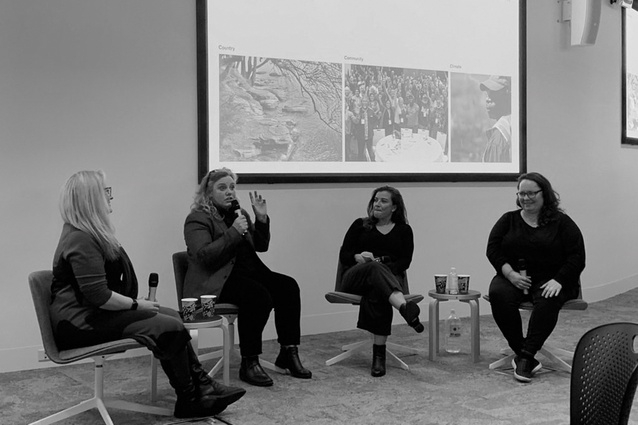

Design for Decolonisation: Richard Francis-Jones, Design Director, reflects on the ways in which a new architecture can begin to undo colonial architecture’s symbols and institutional instruments of oppression.
Country, climate and community underpin the design aspirations of our studio. In June last year, we hosted a studio conference at the University of Technology Sydney to extend our knowledge of and reinforce our commitment to these values but, also, to reunite our studio camaraderie after the isolation enforced by the Covid 19 virus.
A panel discussion with significant academic and professional speakers was devoted to each of these three themes. We also closed the studio for an additional day so that each of our current projects could be critically reviewed in relation to these fundamental measures of our design. The conference and project reviews were occasions to listen and learn, to ask questions of ourselves and to deepen our commitment to addressing these great challenges, in our design work and our professional conduct.

Annie Hensley; Head of fjcplace, Jo Kinniburgh; Bangawarra, Alison Page; Walbanga and Wadi Wadi woman and Creative Director ZAKPAGE, Shannon Foster; D’harawal Saltwater Knowledge Keeper, Bangawarra
But perhaps these three central challenges and aspirations of the work of our studio can be compressed into a single overarching objective: The project of design for decolonisation.
Colonisation is a conflict of opposing cultural relationships with the life of our world: a conflict between colonial cultures of ownership, use and exploitation, with First Nations, Māori and Pasifika cultures of custodianship, meaning and symbiosis. Decolonisation, then, must seek repair of and reconciliation with both our damaged community and the damaged natural world.
Architecture is a cultural and social instrument. It provides not only the quantitative, functional and spatial support but also the ideological representation of any social, political or cultural project of change and transformation, be it oppression or emancipation, status quo or reconciliation. Architecture will generally serve the dominant and the powerful: institutional, corporate or individual.
Within Euclidean, rationalised grids laid over the landscape, endless classical architectural frames of proportional perfection were constructed; we now hold these in heritage reverence. But they are not neutral constructions; they are instruments of power, authority and control, both representations and facilitators of colonial power. To First Nations, Māori and Pasifika cultures, surely these classical colonial buildings were and remain institutional instruments and symbols of oppression.
Architecture is not innocent and must bear responsibility and consequence. Inevitably, this means architecture must change, be changed, adapt and adjust lies to truths.




